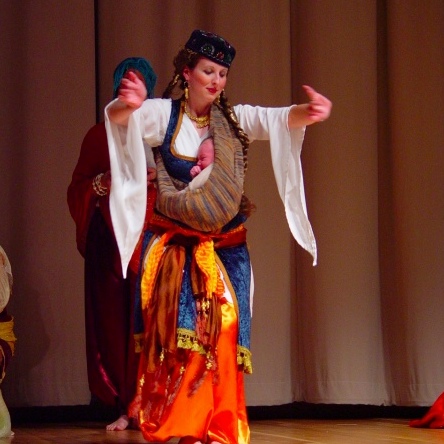I thought you would enjoy an excerpt of an interview with Jean Pierre Hallet (now deceased), who grew up with the Efe pygmies in equatorial Africa, and lived with them for much of his sixty plus years. I wish that our so-called advanced western society had it this right!
This account fits in really well with what my hypnobirthing families learn when we study the history of birth. Primitive or primal people the world over have seen birth as a celebration of life, a sacred expression of the divine power in nature. This is in sharp contrast to the early Catholic Church teaching that birth was a curse and a source of sorrow and suffering. If you believe as I do, that our thoughts and beliefs collectively shape our world, then it’s easy to understand why birth is so feared today.
A note to this description : typically in early labour, the laboring woman stays alone and in the dark, or as dark as she can make her hut until her waters release. No interference. The woman is free to be in any position and make any type of sounds… safe, private and unobserved. (Sarah Buckley’s hallmarks for a great birth) I also love that the ‘aunties’ (midwives) are beside her and not in front-good energetics there. No one is taking command by body placement. Notice also the size of the babies in relation to their mothers and note the use of vocalizations/singing to help move the energy through.
If you would like to read another first hand account of “primitive or primal” birthing, then please read the post on bellydancing which includes the story of an American woman who traveled to the Sahara dessert in the 60s and witnessed a traditional birth in which the women helped the birthing mother attain a trance like state by dancing with and around her. If you know of any other primal birthing accounts please let me know. I would love to read them.
Marie
—-
Hallet described Pygmy labor as being very short, natural, and easy, even for a first-time mother. And this is in spite of the fact that Pygmy babies are, proportionally, the biggest babies in the world. For example an 80-pound Pygmy mother typically gives birth to an eight-pound baby, about one-tenth of her body weight. This would compare to a 130-pound woman birthing a 13-pound baby.
When the mother’s membranes rupture, she notifies her two midwives, who then walk with her to the river, one on either side. “At the time of the pain,” Hallet said, “she will walk and sing, sing and be joyous.”
Once at the river, the pregnant woman squats on a flat rock. The midwives hold her on each side, and breath deeply with her in what Hallet referred to as “a tremendous feeling on oneness.” When they feel the time has come, the women hold their breath. “They pause together,” said Hallet, “and then you see the baby coming out.”
One of the midwives briefly holds the baby upside down, washes the upper part of the body to make sure the baby is breathing well, and then returns the child to the mother for nursing. The other midwife works her teeth down the umbilical cord until she finds the narrow part, a few inches from the infant’s abdomen. “This is the place where, if a baby were dropped from the womb of a standing mother, the weight of the child would be enough to break that cord at that point,” said Hallet. The midwife bites this narrow part very slowly, and then gently squeezes the cord with her fingers. There is usually very little bleeding.
To celebrate the birth of her child, Hallet noted, a mother will sing this song:
My heart is so joyous,
My heart flies in singing,
Under the trees of the forest,
The forest, our home, our mother.
In my net I have caught
A little bird,
A very little bird,
And my heart is caught
In the net with my little bird.
During the birth, the father stays away. Birth is considered to be women’s business. After birth, when the mother and baby have returned to their leafy, dome hut, the father comes to them and asks permission to enter. Then the father might clap his hands and thank his wife for their very wanted child.
Newborn Care
According to Hallet, there is no bonding ritual, but there is a bond — “like a fruit to its branch” — a physical attachment for the first year or so. During this year, the baby is “never separated from the mother.” In Hallet’s view, this constant contact is one reason why Pygmy infants rarely cry. Pygmy babies appear to feel good. “They are satisfied in all of their requirements, ” he stated. On the rare occasion when a baby does cry, it is only for a moment, because the baby’s need is immediately taken care of. Often this means nursing, which satisfies the baby’s necessity for close contact and attention, as well as for nourishment.
Hallet remarked that the baby is usually carried in front, although sometimes on the back. In either position, Pygmies feel it is essential to maintain skin-to-skin contact, with the child naked against the mother’s bare skin. If clothing is needed for warmth, the mother wraps a clothe around both herself and her child, not between them. This constant skin contact continues for at least the first six months. Thereafter, the mother continues to provide plenty of touching as well as baby-led nursing.
…
The father takes great interest in his baby. He plays, holds and hugs the child as much as the mother does. Men and women equally manifest love and care. In fact, fathers will sometimes hold their babies for very long periods of time. Hallet recalled, “The most beautiful time for a father is when he holds his baby for the very first time. He will hold his newborn with great . . . tenderness. And usually he will cry, because he is so touched by his baby.”
by Ushanda io Elima, a Pygmy Model For Partnership
If you enjoyed reading this article, you might also like these two blog posts about birth.
 Bellydancing in Birth I love this. I’m a belly dancer. One of my best memories from my first birth (natural but prior to hypnobirthing) was dancing, belly dancing, figure 8 movements with my husband standing behind me, kind of like spooning standing up, to the music of Shakira. Keep Reading
Bellydancing in Birth I love this. I’m a belly dancer. One of my best memories from my first birth (natural but prior to hypnobirthing) was dancing, belly dancing, figure 8 movements with my husband standing behind me, kind of like spooning standing up, to the music of Shakira. Keep Reading





5 thoughts on “Giving Birth like Primal Peoples… Pygmy Birth”
thanks for posting. That was just wonderful.
What a beautiful account! Definitely vastly superior to the state of fear with which most women enter labour.
– E
Thank you so much, this is such an empowering story. I have recently published Primal Birth: The Awakening of Jessica Buckley which is a novel taking a young woman back through the history of childbirth, through the ‘rainbow’ of her matriarchal line, to understand why so many women experience fear of childbirth today. I am always excited to find other experiences which reinforce my belief that childbirth was and can still be a natural, beautiful, powerful and magical experience. Thank you again.